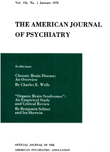AN INVESTIGATION OF READING DIFFICULTY IN YOUNG CHILDREN
Abstract
The purpose of this study has been to assess historical and test material in order to arrive at a basis for making an early diagnosis of reading difficulty in young children. An intensive study of 24 children with reading difficulty has provided the basis for the following conclusions:
1. A careful medical history which explores the family background for reading problems and problems of lateral dominance, and which makes inquiry into the details of pregnancy and early development can contribute significantly to the diagnosis of reading difficulty. The majority of the children with reading difficulty were found to show a family history characterized by reading problems and/or laterality other than right in 2 or more generations. Atypical pregnancy, birth, or neonatal development was characteristic of other children with reading difficulty and subtle central nervous system dysfunction seems likely to be a factor in the reading performance of these children.
2. Stress reactions in otherwise healthy, intelligent children of early school age should cause the physician to consider the possibility of reading difficulty in his evaluation of the child.
3. In young children of normal intelligencce, skills of visual perception appear to be more closely associated with success in reading than general intelligence. Among these perceptual skills is the ability to hold perceived figures in true spatial orientation over brief intervals in the absence of the immediate stimulus, and the ability to find and hold simple figures in more complex ones. The Embedded Figures Test and the Reversible Figures Test provide a method of quantitative assessment of these abilities and are suggested as helpful diagnostic tools.
4. Low scores on the digit memory span and coding sub-tests of the Wechsler Intelligence Scale for Children appear as possible indicators of reading difficulty in young children and should alert the diagnostician to the need for further study of this possibility.
5. The addition of kinesthetic cues in reading instruction appears to have been of little benefit to the slow readers in learning word lists.
6. The hair whorl sign, as a measure of congenital laterality, appears to be significantly related to the problem of reading difficulty. That a shift from congenital laterality to environmentally determined laterality might be a factor in the determination of early reading problems is suggested by this study.
Access content
To read the fulltext, please use one of the options below to sign in or purchase access.- Personal login
- Institutional Login
- Sign in via OpenAthens
- Register for access
-
Please login/register if you wish to pair your device and check access availability.
Not a subscriber?
PsychiatryOnline subscription options offer access to the DSM-5 library, books, journals, CME, and patient resources. This all-in-one virtual library provides psychiatrists and mental health professionals with key resources for diagnosis, treatment, research, and professional development.
Need more help? PsychiatryOnline Customer Service may be reached by emailing [email protected] or by calling 800-368-5777 (in the U.S.) or 703-907-7322 (outside the U.S.).



